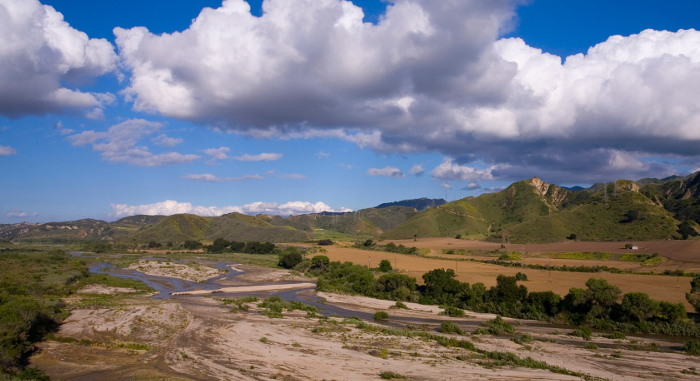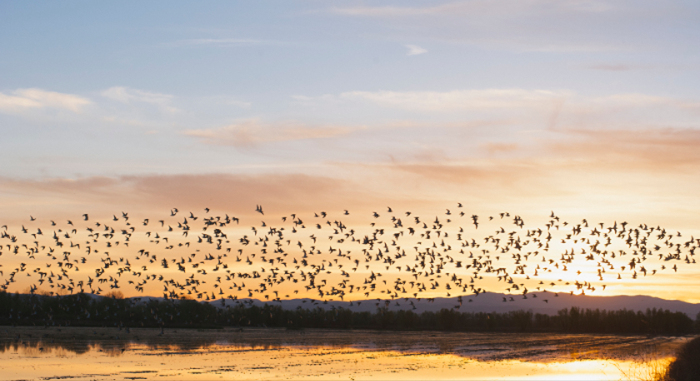California is one of the most hydrologically altered landscapes in the world. As water becomes ever more scarce and the human population continues to grow, that vast engineered system strains to meet the needs of people let alone the needs of nature.
Water rights allocations far exceed actual surface water supply, and millions of wells tap groundwater to meet the increasing demands of farms and communities. As groundwater reservoirs are depleted they can in turn reduce surface flows – exacerbating a vicious cycle in which people and nature both lose. Rivers, wetlands and groundwater-dependent ecosystems are caught in this struggle for an increasingly limited resource. Nearly half of California’s roughly 4,000 freshwater species are considered vulnerable to extinction. Of the taxa that are found nowhere but California – our endemic freshwater biodiversity – 90 percent are at risk.
But there is hope. While it is impossible to return natural flows to most of California’s rivers and streams, we can – through science, technology, and innovative market tools – endeavor to deliver water when and where nature needs it most.




M. Florencia Miguel, H. Scott Butterfield, Christopher J. Lortie
This meta-analysis provides a global synthesis of the which restoration practices – active vs. passive – are most successful at restoring plants, animals, and other ecosystem functions to…Maura Palacios Mejia, Emily Curd, Kiumars Edalati, Mark A. Renshaw, Roy Dunn, Daniel Potter, Naomi Fraga, Jenna Moore, Justin Saiz, Robert Wayne, Sophie S. Parker
This paper presents results from the Mojave Desert Springs research project. The authors used an environmental DNA (eDNA) technique to assess biodiversity at four naturally occurring springs. They…Aviv Karasov‐Olson, Alicia K. Bird, Amy C. Collins, Emily E. Graves, Julea A. Shaw, Eric F. Tymstra, T. Rodd Kelsey, Mark W. Schwartz
Conservation biology is particularly susceptible to the knowledge‐implementation gap where academic pursuits do not always meet the needs of practitioners. Providing future practitioners with…Brian Cohen, Kelsey Jessup, Sophie Parker, John Randall, Jill Sourial
Cities across Southern California are investing in new infrastructure to address the challenges of stormwater management. We promote the use of nature-based solutions to ensure projects both treat…Melissa M. Rohde, Laurel Saito, Ryan Smith
In addition to benefiting humans, groundwater is a critical water supply to many ecosystems, providing a buffer during dry periods and critical habitat for rare and endemic species. Increasing…Kristen N. Wilson, , Suzanne L. Baker, G. Mathias Kondolf
Many stream restoration projects are designed with the Natural Channel Design approach, which involves construction of single-thread meandering channels based on formulas for channel form. In some…Benjamin P. Bryant, T R. Kelsey, Adrian L. Vogl, Stacey A. Wolny, Duncan J. MacEwan, Paul C. Selmants, Tanushree Biswas, H S. Butterfield
Irrigated agriculture has grown rapidly over the last 50 years, helping food production keep pace with population growth, but also leading to significant habitat and biodiversity loss globally. Now,…Jonathan R. B. Fisher, Stephen A. Wood, Mark A. Bradford, Rodd Kelsey
Author: Chris Alford, Editors and Reviewers: Amy Campbell, Monty Schmitt, Sara Press, Wendy Eliot, Bob Neale
Evaluating and Protecting Environmental Water Assets: A Guide for Land Conservation Practitioners, a publication by TNC and the Sonoma Land Trust (SLT), provides provides easy to understand guidance,…Jonathan R. B. Fisher, Stephen A. Wood, Mark A. Bradford, Thomas Rodd Kelsey
Michael J. Paul, Ben Jessup, Larry R. Brown, James L. Carter, Marco Cantonatie, Donald F. Charles, Jeroen Gerritsena, David B. Herbst, Rosalina Stancheva, Jeanette Howard, Bill Isham, Rex Lowe, Raphael D. Mazor, Patina K. Mendez, Peter R. Ode, Alison O'Dowd, John Olson, Yangdong Pan, Andrew C. Rehn, Sarah Spaulding, Martha Sutula, Susanna Theroux
Water resource agencies assess stream water quality by determining the bugs and algae present to develop biotic indices. Yet translating these technical measures into meaningful language is difficult.…Butterfield, H.S., M. Reynolds , M.G. Gleason, M. Merrifield, B.S. Cohen, W.N. Heady, D. Cameron, T. Rick, E. Inlander, M. Katkowski, L. Riege, J. Knapp, S. Gennet, G. Gorga, K. Lin, K. Easterday, B. Leahy, M. Bell
This Plan frames the biological and cultural significance and provides the short- and long-term goals, objectives, and priority actions for the Jack and Laura Dangermond Preserve.Sarah M. Yarnell, Eric D. Stein, J. Angus Webb, Theodore Grantham, Rob A. Lusardi, Julie Zimmerman, Ryan A. Peek, Belize A. Lane, Jeanette Howard, Samuel Sandoval-Solis
The authors of this paper are engaged in developing flow criteria for California Streams through California Environmental Flows Framework (CEFF) collaboration. The effort is funded by the State…Samuel C. Zipper, Jennifer K. Carah, Christopher Dillis, Tom Gleeson, Ben Kerr, Melissa M. Rohde, Jeanette K. Howard, Julie K.H. Zimmerman
Using a newly developed tool for estimating streamflow depletion from groundwater pumping, this study examined the impacts of ongoing groundwater pumping on streamflow and aquatic ecosystems in the…Kristin B Byrd, Pelayo Alvarez, Benjamin Sleeter, Lorraine Flint, Alan Flint, Richard Cameron, Jeffrey Creque
Management of protected lands may enhance ecosystem services that conservation programs were designed to protect. Practices that build soil organic matter on agricultural lands also increase soil…